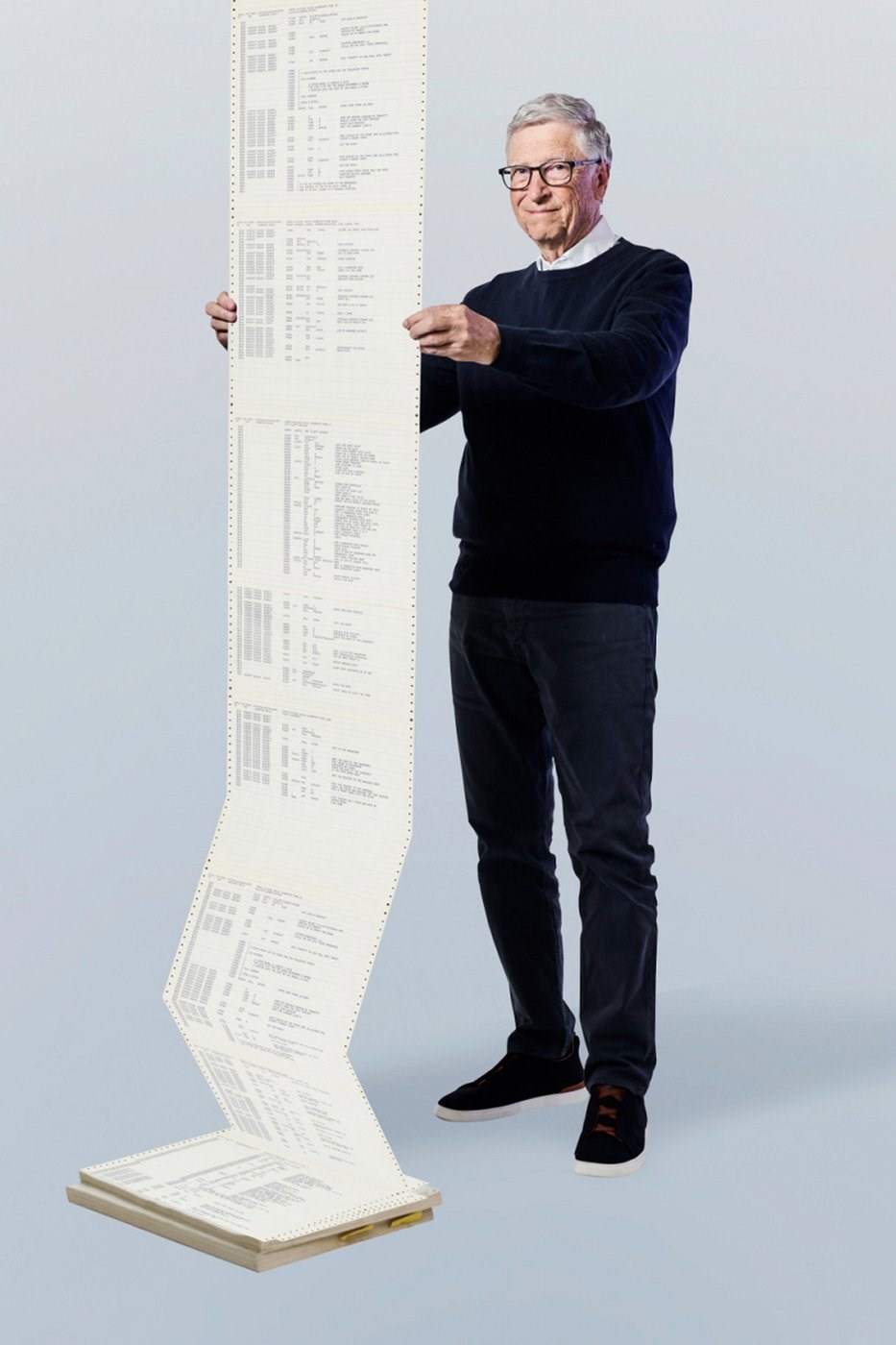Even as he grows older, Microsoft founder Bill Gates still fondly remembers the catalytic computer code he wrote 50 years ago that opened up a new frontier in technology.
Although the code that Gates printed out on a teletype machine may look crude compared to what's powering today's artificial intelligence platforms, it played a critical role in creating Microsoft in April 1975 — a golden anniversary that the Redmond, Washington, company will celebrate on Friday.
Gates, 69, set the stage for that jubilee with a blog post reminiscing on how he and his old high school friend — the late Paul Allen — scrambled to create the world's first “software factory” after reading an article in the January 1975 issue of Popular Electronics magazine about the Altair 8800, a minicomputer that would be powered by a tiny chip made by the then-obscure technology company, Intel.
The article inspired Gates, who was just a freshman at Harvard University, and Allen to call Altair's maker, Micro Instrumentation and Telemetry Systems, and promise the company's CEO Ed Roberts they had developed software that would enable consumers to control the hardware. There was just one hitch: Gates and Allen hadn't yet come up with the code they promised Roberts.
Gates and Allen tackled the challenge by latching onto the BASIC computer language that had been developed in 1964 at Dartmouth College, but they still had to figure out a way to make the technology compatible with the forthcoming Altair computer, even though they didn't even have a prototype of the machine.
After spending two months working on the program with little sleep, Gates finished the code that became the basis for the Altair's first operating system. “That code remains the coolest I’ve ever written,” Gates wrote in his blog post, which includes an option to download the original program.
The code would go on to provide the foundation for a business that would make personal computers a household staple, with a suite of software that include the Word, Excel and PowerPoint programs, as well as the Windows operating system that still powers most PCs today.
“That was the revolution,” Gates said of the code in a video accompanying his post. “That was the thing that ushered in personal computing.”
Gates' recollection of the code is part of a nostalgic kick that he has been on this year as he prepares to turn 70 in October.
The trip down memory lane included the February release of a memoir exploring his early years as an often-misunderstood child with few friends, and a hailing of the 25th anniversary of the philanthropic foundation he created after stepping down as Microsoft's CEO in 2000. The tech giant initially stumbled after Gates' departure but has been thriving under CEO Satya Nadella, and has amassed a market value of about $2.8 trillion.
In his memoir, Gates also reflected on his tempestuous relationship with fellow PC pioneer, the late Apple co-founder Steve Jobs, whose company will be celebrating its golden anniversary next year.
“Fifty years is a long time,” said Gates, whose personal fortune is estimated at $108 billion. “It's crazy that the dream came true.”
Michael Liedtke, The Associated Press



